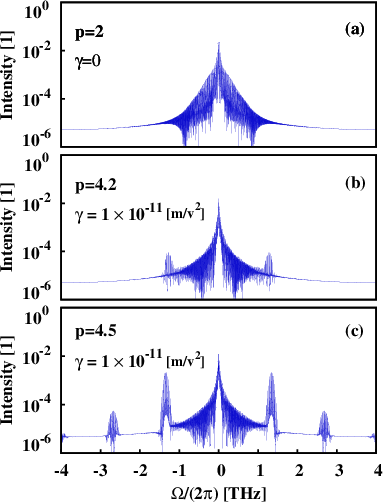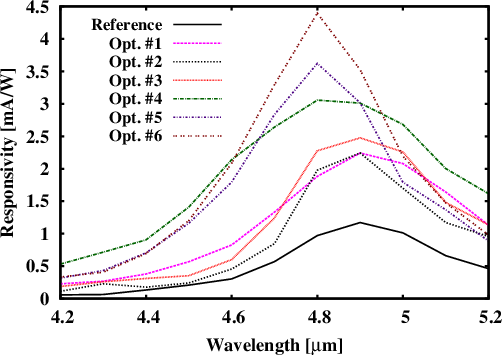
Intersubband (ISB) photodetectors, demonstrated in 1987 in the form of photoconductive quantum-well infrared photodetectors [226], has attracted much scientific attention in recent years. Particularly at the energetic extremes of infrared radiation, namely in the low energy THz and in the high-energy near-infrared ranges, there are still challenges in finding suitable materials and designs for ISB photodetectors [227].


In the NIR, fast intraband semiconductor photodetectors are only available for wavelengths up to about 1.6 μm. For the other end of optical spectrum, namely for detection of THz radiation, bolometers are widely used; however, they are not well suited for high-speed applications. ISB photodetectors can be designed for a wide range of wavelengths in a single material system just by choosing adequate semiconductor layer thicknesses [227]. This advantage of ISB photodetectors make them very promising candidates for THz radiation. Compared with photoconductive ISB photodetectors, the research on zero-bias photovoltaic ISB photodetectors has seen less progress. Schneider et al. [228,229] observed pronounced photovoltaic effects in an asymmetric multi-QW structure. According to Schneider [230], an optimized photovoltaic photodetector has superior noise properties, the capability to operate at higher photon fluxes, and an improved dynamical range.
Hofstetter et al. [231] used a QCL structure as photovoltaic detector which is employed as a prototype device in this section. In analogy to the functioning of a QCL, a similar but optimized ISB detector presented by Gendron et al. [232] was named quantum cascade detector (QCD). QCDs offer more design freedom for a given material composition.
The operating principle of a QCD is outlined in Fig. 6.10. A ground level electron is excited to a higher state by absorbing a photon. Due to the asymmetric design, the electron relaxes in a preferred direction into the quantum well of the next cascade. This concept reduces dark current and dark current noise.
We have developed the QCL optimization algorithm to maximize the performance of QCDs. The QCD device N1022 reported in [227] is selected as the reference design. The layer sequence of the In0.53Al0.47As∕In0.53Ga0.47As QCD structure, starting with the well, is as follows: 5.1/7.5/1.25/6.5/1.45/6.4/1.7/7.9/2.0/7.7/2.4/7.5/2.9/7.1/3.5/6.8 nm. The underlined layer is n-doped with Si at 4 × 1017cm-3.

The responsivity at the room temperature is selected as the figure of merit. The wavelength operation of the optimized structures are set to be the same as the wavelength of the reference design. The optimization results for the responsivity is presented in Fig. 6.11. Larger responsivities are achieved for optimized QCD structures. However, for larger responsivities the bandwidths of optimized QCDs are increased. The results indicate the excellent performance of our developed optimizer for QCDs.